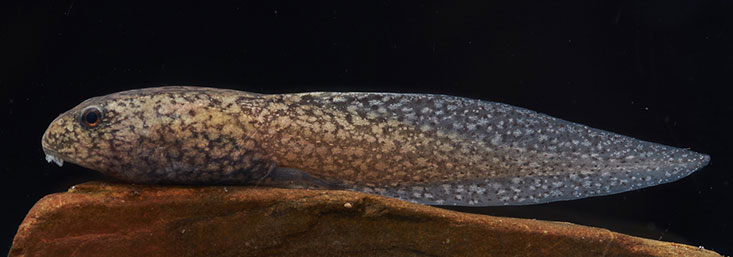Phylogeny and evolution of amphibian larvae

Photo: UHH/CeNak, Haas
Blindworms, salamanders and frogs could not be more different, yet these amphibians living today are a monophyletic group (Lissamphibia). The reproductive strategies in the three groups are diverse. Our studies on the anatomy of the larval forms, with a focus on cranial morphology and ontogeny, show that despite apparent major structural differences, the similarities between the groups predominate. Cranial structures and head muscles can be homologised well. These feature complexes can be used well for phylogenetic relationship analyses.
Publications
- Frost, D.R., Grant, T., Faivovich, J., Bain, R.H., Haas, A., Haddad, C.F.B., de Sá, R.O., Channing, A., Wilkinson, M., Donnellan, S.C., Raxworthy, C., Campbell, J.A., Blotto, B.L., Moler, P., Drewes, R.C., Nussbaum, R.A., Lynch, J.D., Green, D.M., Wheeler, W.C. (2006). The amphibian tree of life. Bulletin of the American Museum of Natural History 297:1–370.
- Hertwig, S., de Sá, R. O., Haas, A. (2004) Phylogenetic signal and the utility of 12S and 16S in frog phylogeny. Journal of Zoological Systematics and Evolutionary Research 42:2–18.
- Haas, A. (2003) The phylogeny of frogs as inferred from primarily larval characters. Cladistics 19:23–89.
- Haas, A. (2001) The mandibular arch musculature of anuran tadpoles with comments on the homologies of amphibian jaw muscles. Journal of Morphology 247(1):1-33.
- Haas, A. (1997) The larval hyobranchial apparatus of discoglossoid frogs: its structure and bearing on the systematics of the Anura (Amphibia: Anura). Journal of Zoological Systematics and Evolutionary Research 53(4):179-197

